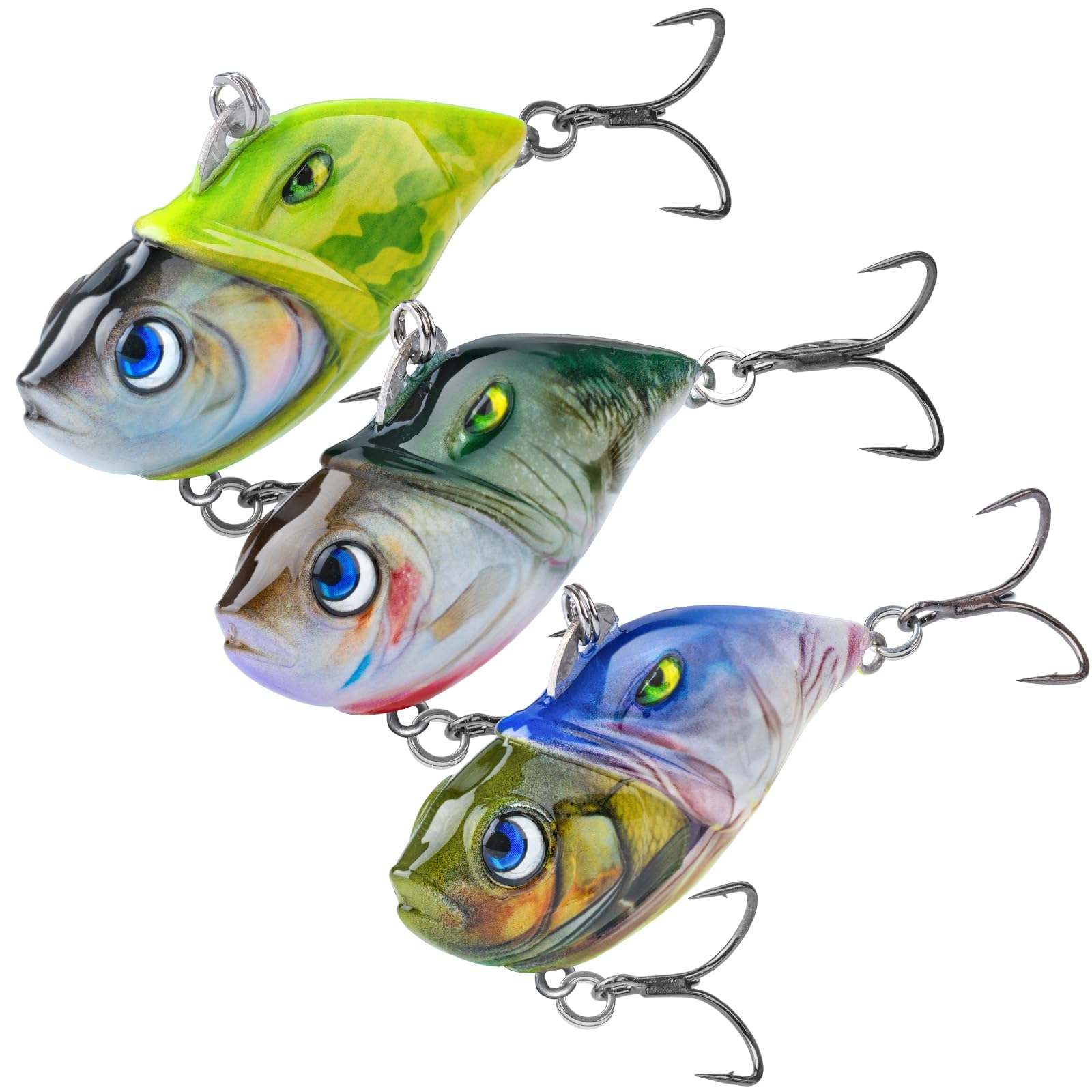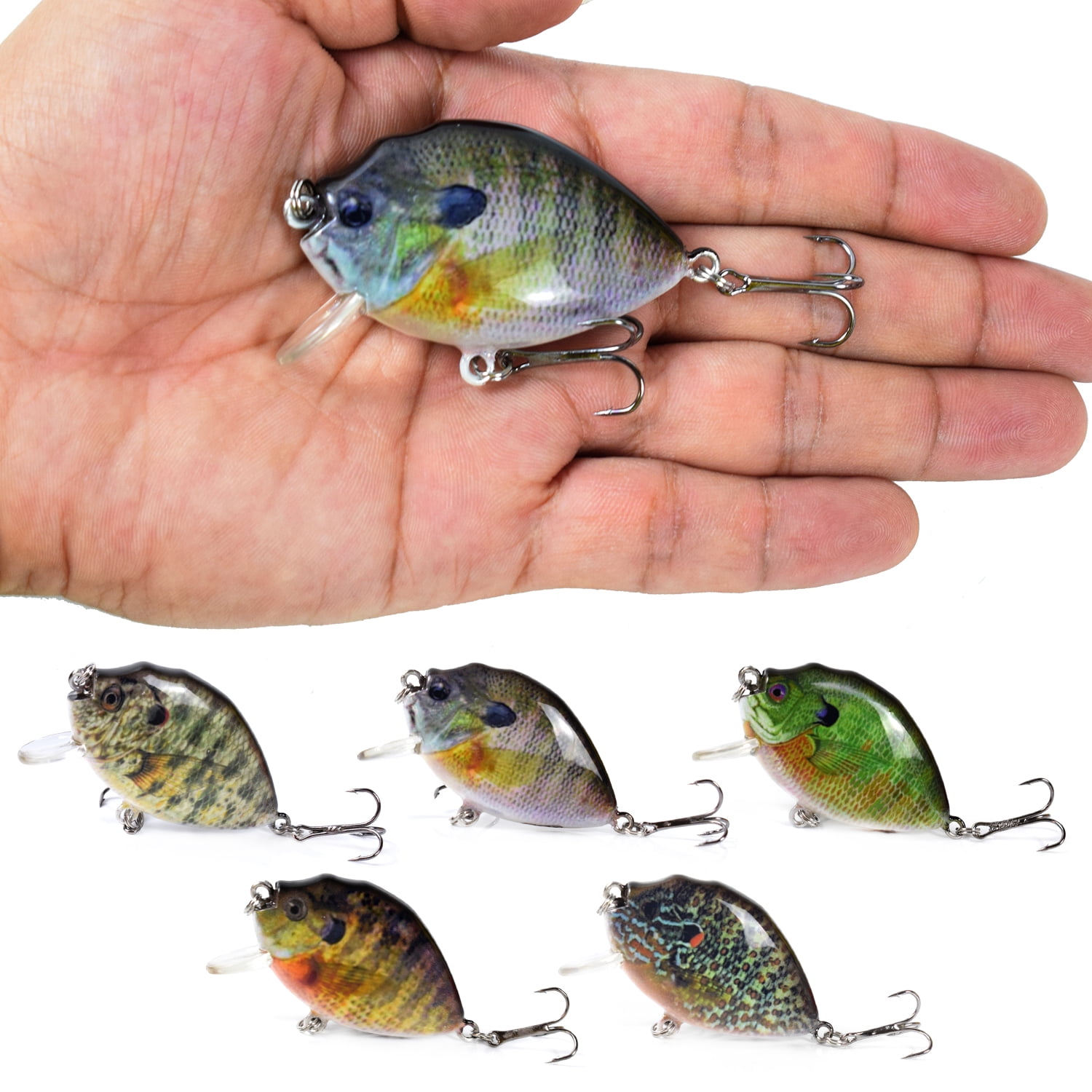The Science of Bass Lures: How Size and Action Affect Strikes
Explore the Keys Behind Reliable Bass Lures to Improve Your Angling Experience
Understanding the details of bass Lures can greatly influence angling success. Numerous Lures serve distinct purposes, from crankbaits developed for vast insurance coverage to jigs that target particular frameworks. The effectiveness of these Lures commonly hinges on aspects such as color, activity, and seasonal patterns. By understanding these aspects, fishermens can unlock a much more rewarding experience. The inquiry continues to be: which techniques will generate the finest outcomes on the water?
Understanding Bass Behavior and Habitat
Comprehending the habits and habitat of bass is crucial for fishermens looking for success on the water. Bass are functional fish found in numerous freshwater settings, consisting of lakes, rivers, and ponds. They tend to choose locations with structure, such as submerged rocks, fallen trees, and water plant life, which give sanctuary and hunting grounds.
Seasonal patterns dramatically affect their behavior; in warmer months, bass frequently occupy superficial waters, while they pull away to deeper locations during colder periods. Best Bass Lures South Africa. Their feeding routines are opportunistic, with a diet plan being composed generally of smaller fish, insects, and shellfishes
Time of day also plays a role; bass are more energetic throughout very early mornings and late nights. Weather can impact their behavior as well, as cloudy days may motivate superficial feeding, whereas bright sunshine frequently drives them to seek cover. Acknowledging these patterns furnishes fishermens with the knowledge required for efficient fishing approaches.
Sorts Of Bass Lures and Their Uses
A variety of bass Lures are crucial tools for anglers intending to attract this prominent game fish. These Lures can be categorized into a number of kinds, each offering distinctive purposes. Crankbaits, made to imitate the swimming activity of baitfish, are effective for covering large locations swiftly. Spinnerbaits, including rotating blades, create vibrations and flashes that can lure bass hiding in cover. Jigs, with their heavy heads and weedless design, are suitable for lower fishing, enabling fishermens to existing lure near structures where bass typically prowl. Soft plastics, such as worms and creature baits, offer flexibility and can be rigged in numerous methods to adjust to varying conditions. Topwater attractions, like frogs and poppers, are best utilized throughout low-light hours when bass are actively eating the surface area. Each type of lure plays an important duty in boosting angling experiences and enhancing the probability of successful catches.

Color and Design: What Brings In Bass?
What elements affect bass destination to details appeal design and colors? The interaction of light, water clearness, and the natural surroundings plays an essential role. Bright shades, such as chartreuse and orange, can catch a bass's eye in murky waters, while more suppressed tones like environment-friendlies and blues might master clear problems.
Design aspects, including form and movement, additionally substantially influence bass destination. Lures that imitate all-natural victim, such as baitfish or crawfish, are specifically reliable. Furthermore, the presence of realistic details, like fins or ranges, improves the natural appearance, more tempting bass.
Emotional aspects, such as a bass's feeding practices and territorial reactions, must not be forgotten. In specific scenarios, strong layouts can provoke a response from aggressive bass, while subtle variants can attract more mindful fish. Ultimately, recognizing design and color subtleties is important for optimizing appeal effectiveness.
Matching Lures to Water Issues
Selecting the ideal attraction involves greater than just design and color; water conditions play a substantial role in establishing one of the most efficient options. Factors such as water temperature, clearness, and depth straight affect bass actions and their feeding patterns. In clear water, all-natural colors and subtle presentations have a tendency to be extra efficient, while dirty problems might ask for brighter, extra vibrant Lures that can draw in interest.
Temperature likewise influences bass task; throughout warmer months, faster-moving Lures can evoke strikes, whereas cooler temperatures may call for slower, more intentional presentations. In addition, deeper waters frequently require larger Lures that can reach the desired deepness, while shallow locations are much better suited for lighter, surface-oriented options.
Strategies for Efficient Draw Discussion
Understanding the strategies for efficient appeal discussion can substantially enhance fishing success. Fishermens ought to focus on the speed and rhythm of their retrieves, adjusting them to resemble the natural activity of target. A steady obtain jobs well for several attractions, yet including pauses can trigger strikes from much more mindful fish. Furthermore, varying the deepness of the attraction is important; utilizing various spreading angles and adjusting the reel can aid target fish at numerous midsts.
Using a combination of finesse discussions, such as twitching or dragging the attraction across the base, can likewise work. It is important for fishermens to review the water and change their techniques based upon exposure and framework. Additionally, presenting Lures near cover, like immersed rocks or plants, often generates far better results, as bass often tend to seek sanctuary. Inevitably, exploring with various techniques will certainly lead to a more satisfying fishing experience.
Seasonal Factors To Consider for Tempt Choice
Seasonal changes dramatically influence bass actions and lure performance. As water temperature levels vary, fishermens should readjust their attraction selections to line up with pre-spawning and post-spawn conditions. Recognizing these seasonal patterns can improve angling success by targeting bass at their most active times.
Seasonal Water Temperature Level Results
As water temperatures change throughout the year, bass actions and feeding patterns transform, affecting the efficiency of different attractions. Throughout chillier months, bass tend to become lethargic, favoring slow-moving Lures that simulate battling target. In comparison, as temperatures climb in springtime, bass come to be a lot more active, making faster, a lot more aggressive Lures effective. Mid-summer sees bass seeking deeper, cooler waters, necessitating the usage of Lures that can get to these depths. As temperatures start to decrease in fall, bass often feed heavily in preparation for wintertime, making flexible Lures that can mimic a range of forage kinds especially effective. Understanding these seasonal temperature level impacts enables anglers to select appropriate Lures that line up with bass actions, optimizing their look at here now angling success.
Pre-Spawning Draw Choices
What aspects influence the option of Lures throughout the pre-spawning duration for bass? Fishermens must take into consideration water temperature level, weather problems, and the bass's feeding actions. As temperature levels climb and days lengthen, bass become much more aggressive and energetic, triggering a shift in their feeding patterns. During this moment, entices that imitate the all-natural victim of bass-- such as shad or bluegill-- are especially efficient. Popular selections consist of spinnerbaits, lipless crankbaits, and jigs, which can be fished at various midsts. Furthermore, anglers must concentrate on areas with cover, such as immersed plants or rough frameworks, as these areas commonly attract pre-spawn bass. Best Bass Lures. Comprehending these factors can dramatically improve the possibilities of a successful fishing journey throughout this crucial seasonal stage
Post-Spawn Techniques Adjustments
Although post-spawn bass exhibit various behaviors than throughout the pre-spawn phase, efficient appeal selection stays important for fishermens aiming to target them efficiently. After spawning, bass usually become tired and seek deeper waters, making it crucial to change appeal choices appropriately. Anglers ought to take into consideration making use of slower-moving baits, such as jigs or soft plastics, which can lure bass that are much less hostile. Crankbaits with a subtle action can likewise work, permitting for a slower presentation that imitates the all-natural post-spawn forage. In addition, angling near structure, such as submerged greenery or rocks, can raise opportunities of success. By recognizing these seasonal adjustments, anglers can improve their angling experience and boost their catch rates throughout the post-spawn duration.
Frequently Asked Questions
Exactly how Do I Select the Right Pole for Bass Angling?
To pick the appropriate pole for bass angling, one need to think about the pole's action, power, and length. A tool to medium-heavy pole, around 6 to 7 feet, is commonly excellent for adaptability and control.

What Is the Best Time of Day to Catch Bass?
The very best time of day to catch bass is typically morning and late afternoon. During these durations, bass are more energetic, feeding near the surface area, making them simpler targets for anglers using efficient attractions.
How Do Weather Affect Bass Fishing Success?
Climate condition considerably affect bass angling success. Warmer temperature levels and cloudy skies frequently urge bass task, while cool fronts can cause lethargy. Rainfall can additionally boost feeding behavior, making it important for fishermens to adapt their methods accordingly.
Can I Use Lures for Other Fish Variety?
Yes, draws developed for bass can likewise work for various other fish species. Selecting the appropriate dimension, color, and action according to the target types and their feeding routines remains essential for success.
What Are Common Blunders When Making Use Of Bass Lures?
Typical mistakes when using bass Lures consist of choosing improper sizes or colors, retrieving also swiftly, stopping working to adapt to weather, and ruling out water depth. These errors can dramatically minimize the possibilities of an effective catch.
As water temperatures vary throughout the year, bass behavior and feeding patterns alter, influencing the performance of different lures. Mid-summer sees bass looking for deeper, cooler waters, necessitating the usage of Lures that can reach these depths. Post-spawn bass link exhibit different behaviors than throughout the pre-spawn phase, efficient lure selection continues to be critical for anglers intending to target them effectively. After spawning, bass usually end up being tired and seek much content deeper waters, making it important to readjust lure selections appropriately. Usual errors when making use of bass Lures include picking unsuitable sizes or colors, retrieving also rapidly, stopping working to adapt to weather problems, and not taking into consideration water depth.